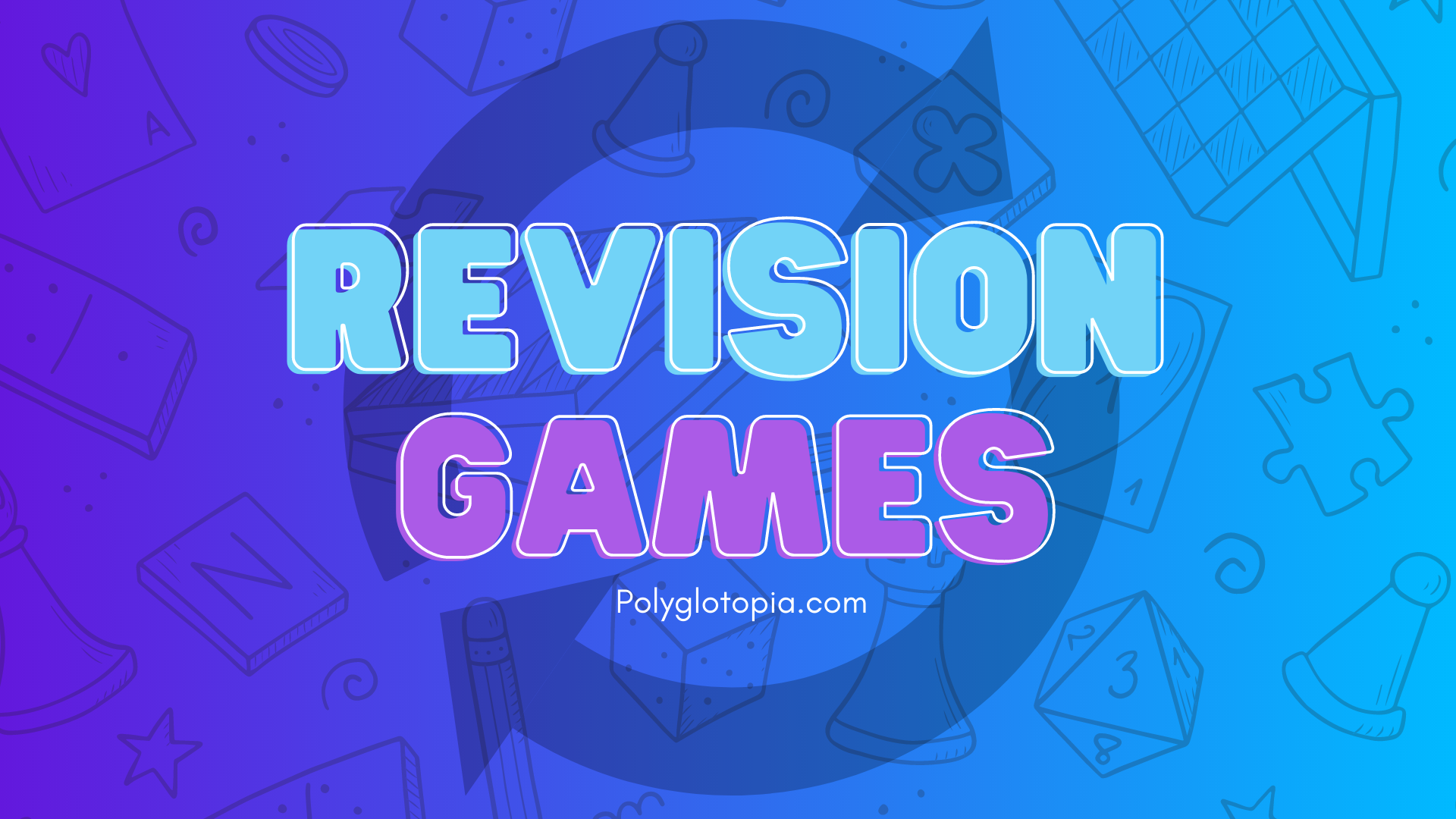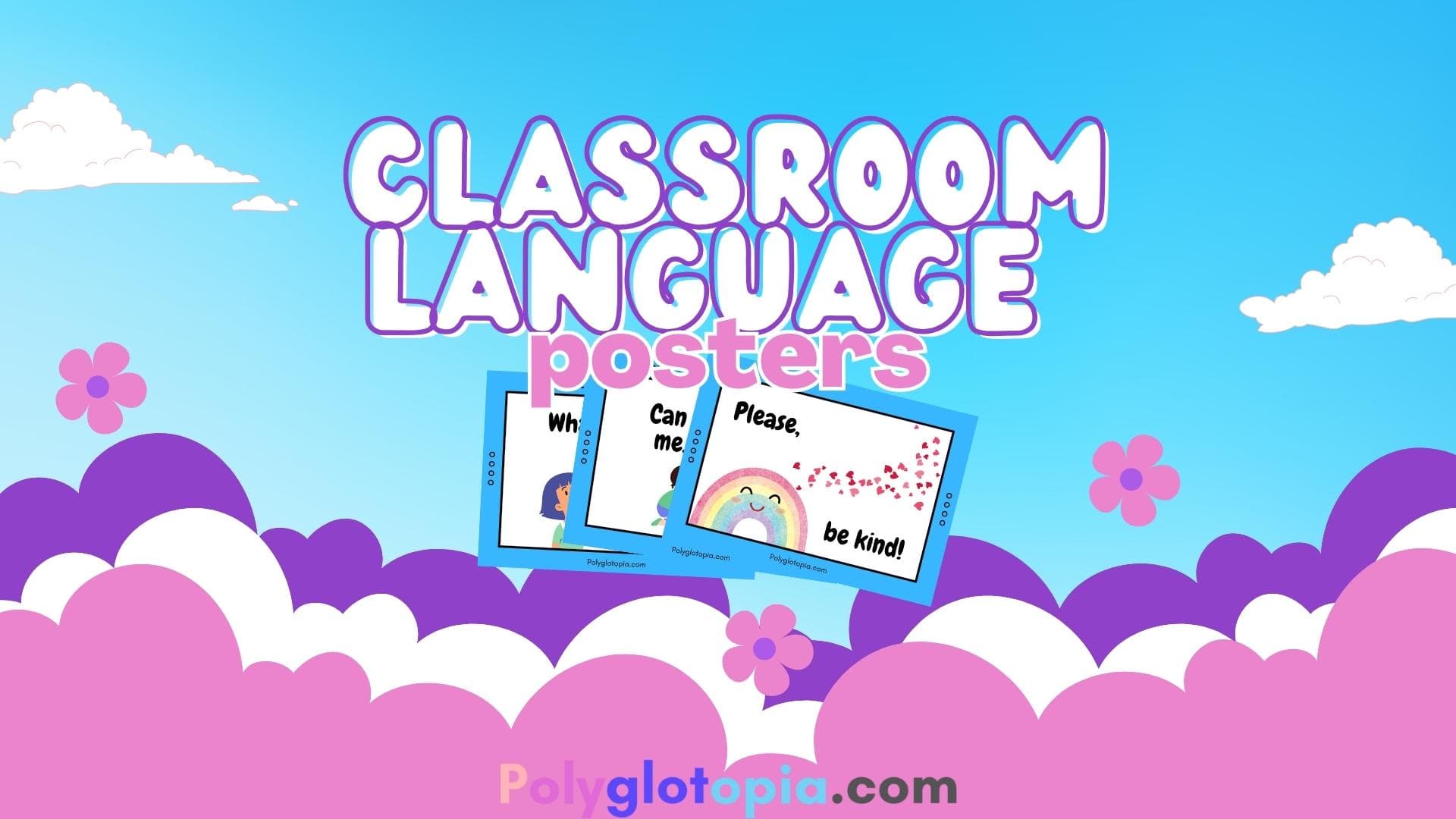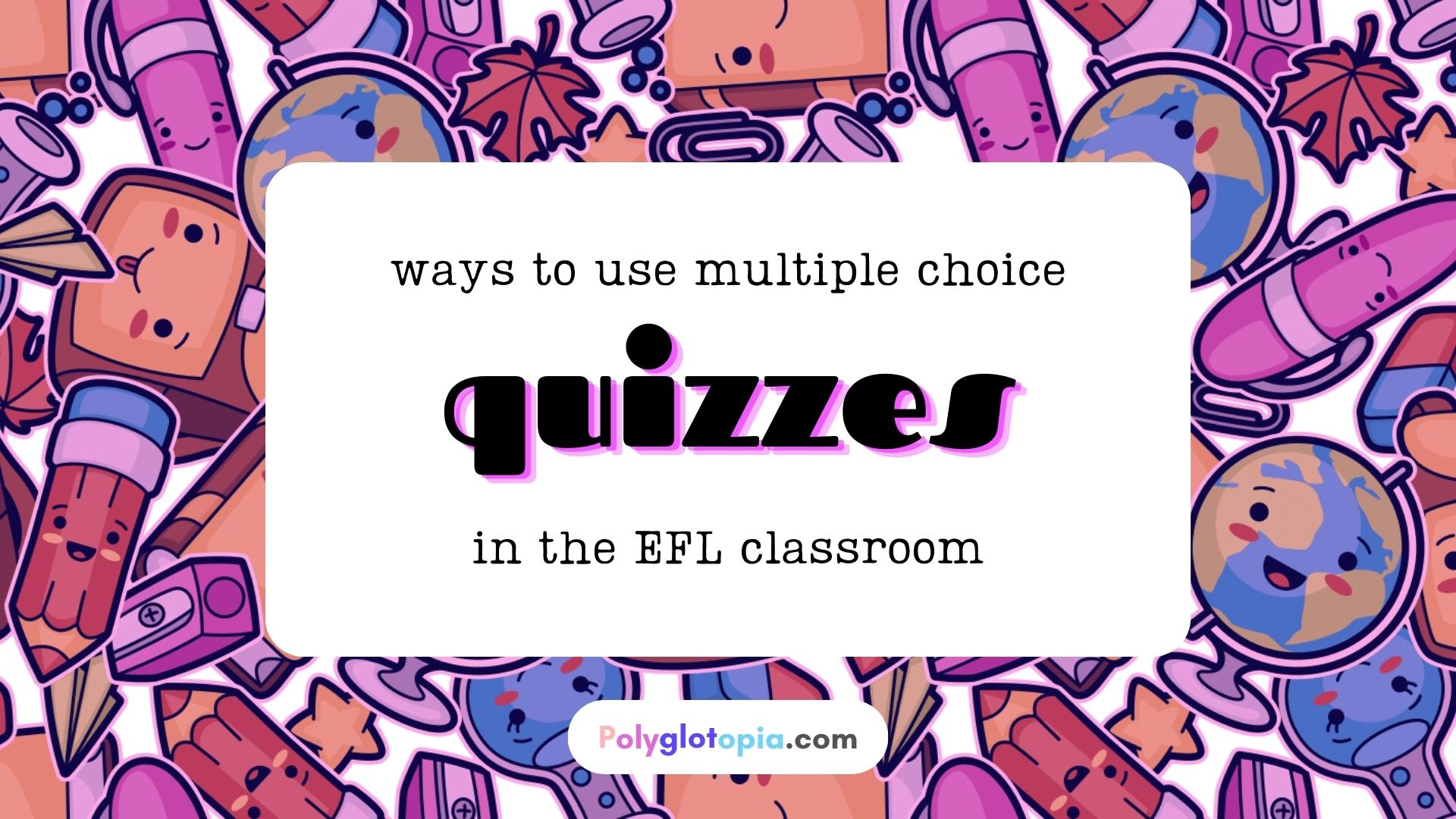The academic year is coming to an end in many countries, and it’s revision time! Often, these lessons are quite challenging as the teacher has to prepare a lot of materials and revision tasks, and overwhelming as you won’t have any books to base your lessons on. That is why we’ve decided to make a list of revision games that could help you during these last weeks. These games can mainly be played with teens and maybe even adult learners, and most of them work better with higher levels. Some of them can also be adapted for young learners.
We have divided them into three big categories: student-generated revision games, ready-made games that require no preparation by the teacher, and teacher-generated revision games that require some preparation beforehand by the teacher.
Student-generated revision games:
Student-generated revision games in the ESL classroom provide numerous benefits. They boost engagement and active participation in the learning process. They deepen their understanding of the concepts as they have to process the information in order to create the questions, and this also boosts the long-term retention of the materials. Find the list of student-generated revision materials below:

Students create Kahoot questions: As not all students know how to digitally create a Kahoot quiz, you could be the one to copy their questions on the actual Kahoot, but students would have to think about the questions as well as the four options together with the correct answer. For students who find it difficult, you could even let them copy some questions from the book.
Test each other. The process could be similar to the one above, but students would have to ask their questions to their partners, groups, or even as a whole class, and the students would compete to find the correct answer.
Make a board game. Students can generate their own board games and play in groups. You can find templates online or let them design their own entirely.
Sentence exchange. Students create questions. They move around the class and ask them to other students. If a student doesn’t answer correctly, they have to keep the sentence. The student with the fewest sentences when the timer finishes wins, or the person who is left with no sentences.
Word exchange: similar to sentence exchange, but this time students have to define a word to one of their classmates. When both find each other’s word, they exchange the small word cards. Set a time for the game to finish; there will be no winners or losers.
Vocabulary bomb: Set a timer and have students say words related to a topic in order. When the time stops, the person next to the last student who answered gets eliminated. They get to choose the next topic, and you now have to reset the timer with fewer seconds. Repeat until you have your final winner.
No Prep Revision Games:
This list includes games that require no preparation whatsoever beforehand. The teacher would just have to pick a grammar or vocabulary topic and explain the instructions. Have a look at these no prep revision games below:

1. Online games: You can find plenty of ready-made sets for revision in Kahoot, Bamboozlee, Wordwall and Blooket. (Find their links here: 10 Free Digital Tools for the EFL Classroom)
2. Board race: The teacher says the definition of a word, and students race to write it on the board.
3. "Change chairs if you...": Write the structure or topic you want them to revise on the board. Take one chair away. The student who was sitting on the chair stands up and says, "Change chairs if you... like spaghetti/chocolate/playing video games, etc." The students that agree with the statement have to change chairs, and the standing student has to try to sit in one of the chairs. The person without a chair says the next sentence.
4. Quiz games: We have created a big list of games you can play with quizzes, which you can find here: 7 ways to use multiple choice quizzes in the EFL classroom.
5. Pictionary: divide students into teams, set a timer, and give a word to each team member. They have to draw the word, and their team has to guess it within the time limit.
6. Dice game: Similar to Pictionary but with more options. Students roll a die. They can define, translate, draw, or mime the word, depending on the number they get.
7. Back to the board: Divide students into teams. One member of each team sits with their back to the board. Then, the teacher writes a word on the board, and the other members of the team have to describe it to the students who cannot see the word. The first team to find it earns a point.
Teacher-generated revision games
Finally, there are some revision games that require some preparation beforehand by the teacher, mainly when it comes to creating the questions. They are a lot, so grab a pencil and a notebook to write down the ones you like and check out the list:

1. Grammar gamble: This game involves creating a set of grammar questions (i.e., gap fill) with varying difficulty levels. Students are given a certain amount of "money," or points. They can choose to bet a certain amount of their money on answering a question correctly. If they answer correctly, they win that amount; if they answer incorrectly, they lose that amount. The student or team with the most money at the end wins the game.
2. Tic-tac-toe: This is the classic game played on a 3x3 grid. Two players take turns marking X or O in empty squares, aiming to get three of their marks in a row horizontally, vertically, or diagonally. In an EFL or ESL context, the game can be modified by requiring students to answer a question correctly in order to place their mark on the grid.
3. Throw the ball game: Write some verbs on the board depending on what you want to practise. Students have to throw a soft ball on the board and hit the words. In order to get the points, they have to answer a question correctly or create a sentence. For example, you can write regular and irregular verbs on the board and students have to come up with the past form.
4. Circle the word: Write 10–20 words on the board. Divide students into two teams facing the board. Give one student from each team a board pen. Say a definition, and students have to race to circle the correct word. No pushing or erasing answers is allowed.
5. Work stations around the room: This game involves setting up different stations or activity areas around the classroom, each with a different task or exercise related to the lesson. Students rotate among the stations, spending a certain amount of time at each one.
6. Grammar Auction: Students are given a set of sentences with errors in grammar. They bid on each sentence, trying to buy the ones they think they can correct. Then, they make the necessary corrections and explain them to the class. The student/team with the highest number of correctly fixed sentences wins the auction.
7. Jeopardy: Based on the popular TV game show, Jeopardy involves dividing the class into teams and creating a game board with different categories and point values. Students take turns choosing a category and point value and then answering a corresponding question. Points are awarded or deducted based on the correctness of the answer. There are free templates available online to easily create them.
8. Connect Four: Connect Four is a game played on a grid, typically consisting of six rows and seven columns. Two players take turns dropping coloured discs into the columns. The objective is to be the first to connect four of their discs in a row, either horizontally, vertically, or diagonally. You can find a nice template here: Four in a Row (Connect Four), but you have to prepare the questions students have to answer correctly in order not to lose their turn. Make sure the questions are not too complex, as it might take a lot of time. A good example is gerund vs. infinitive questions.
9.Taboo: Taboo is a word-guessing game that encourages vocabulary use and creativity. The teacher prepares a set of word cards with a target word written on each card, as well as three taboo words. One student holds a card and tries to describe the word to their teammates without using the word itself or the list of related taboo words. The teammates have to guess the word within a time limit. The team earns a point for each successful guess and moves on to the next card.
10.Information Gap Crosswords: The teacher provides each student with a crossword puzzle that is missing certain clues. Students work in pairs or small groups, where one student has one set of clues and the other has the corresponding missing clues. They have to ask each other questions to fill in the missing information and complete their crossword puzzles.
11. Pronunciation bag: Write a set of words that students tend to mispronounce on small cards and put them in a bag. Students take turns taking one card each time and trying to pronounce it correctly. If the pronunciation is correct, they keep the card. If not, they put it back in the bag. You can also include BANG cards, and when students draw one, they would have to put all their cards back in the bag.



